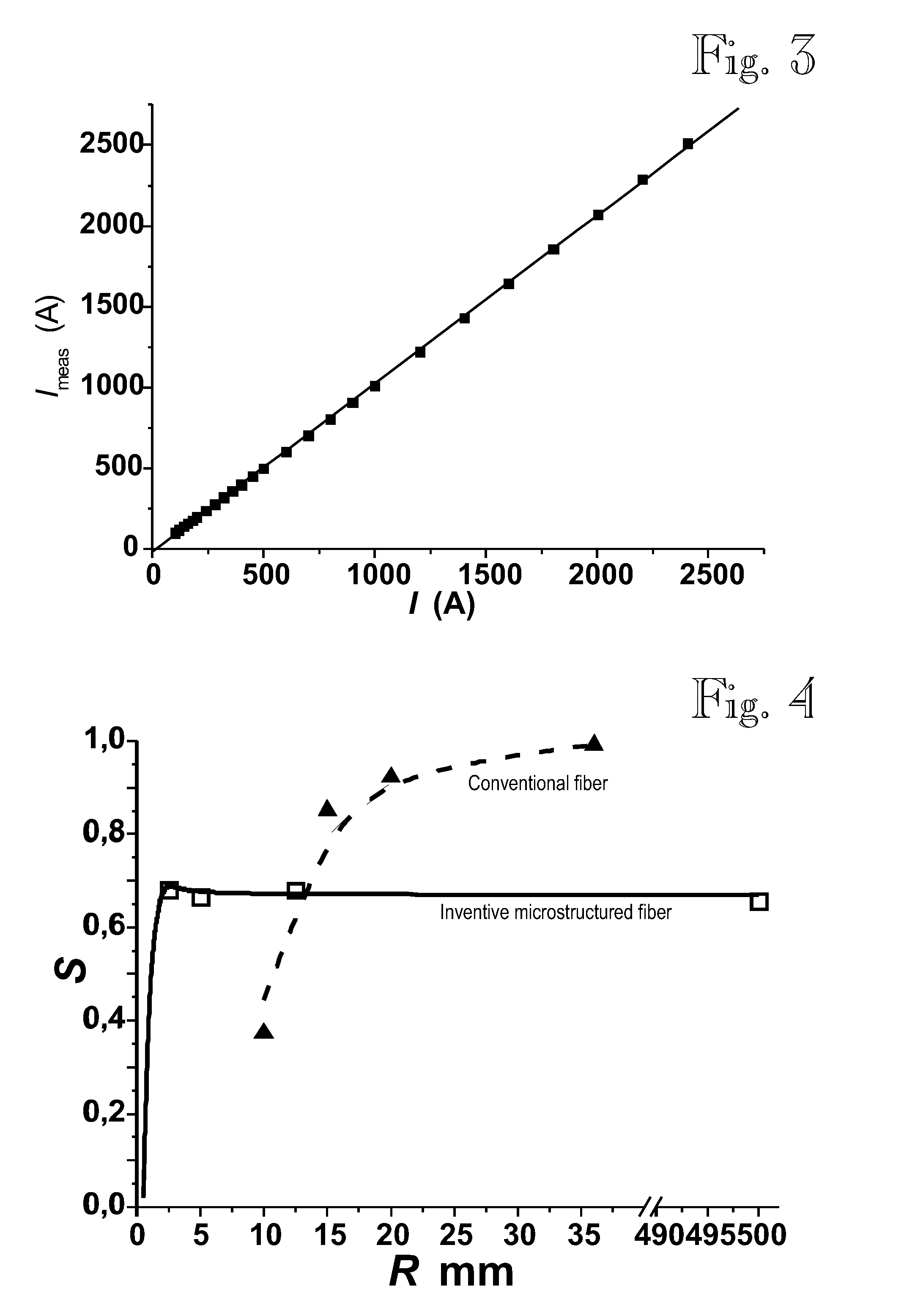Fiber optic current sensor
a current sensor and fiber optic technology, applied in the direction of voltage/current isolation, magnetic field magnitude/direction, measurement devices, etc., can solve the problems of sensor sensitivity, affecting the accuracy of the sensor, and difficult to achieve this property, etc., to achieve the effect of high-efficiency construction
- Summary
- Abstract
- Description
- Claims
- Application Information
AI Technical Summary
Benefits of technology
Problems solved by technology
Method used
Image
Examples
Embodiment Construction
[0027]FIG. 1 shows a first embodiment of the present invention. The overall layout shown in FIG. 1 is largely similar to the layout shown in FIG. 1A of U.S. Pat. No. 6,188,811, and a detailed description of the common elements is largely superfluous. A departure from the prior art is seen in the fact that the piezoelectric birefringence modulator used in the prior art has been replaced by a magneto-optical polarization modulator 4 which comprises a modulator fiber segment 5, around which a solenoid 6 is wound. The modulator fiber segment 5 is shown as a multi-turn fiber coil, but other implementations are possible, as will be shown in more detail in the following.
[0028]Specifically, FIG. 1 shows a fiber-optic current sensor for sensing an electric current carried in an electric conductor 18. The fiber-optic current sensor comprises an optical section and an electronic section. The optical section comprises a light source 1; a directional coupler 2, a radiation polarizer 3, a polariz...
PUM
 Login to View More
Login to View More Abstract
Description
Claims
Application Information
 Login to View More
Login to View More - R&D
- Intellectual Property
- Life Sciences
- Materials
- Tech Scout
- Unparalleled Data Quality
- Higher Quality Content
- 60% Fewer Hallucinations
Browse by: Latest US Patents, China's latest patents, Technical Efficacy Thesaurus, Application Domain, Technology Topic, Popular Technical Reports.
© 2025 PatSnap. All rights reserved.Legal|Privacy policy|Modern Slavery Act Transparency Statement|Sitemap|About US| Contact US: help@patsnap.com



